April 2021

April 2021
Lee Sang-eun has conquered some of the world’s highest peaks, including Tanzania’s Kilimanjaro, Turkey’s Mount Ararat, and Mexico’s Orizaba. She is the first female to reach the Himalaya’s Nirekha peak. Name any world-class mountain — Annapurna, the Japanese Northern Alps, Langtang Lirung and of course Mount Everest — and you can bet she has trekked them all, likely more than once.
![]()
Written by
Kim Jane,
features editor
Photo courtesy of
Lee Sang-eun
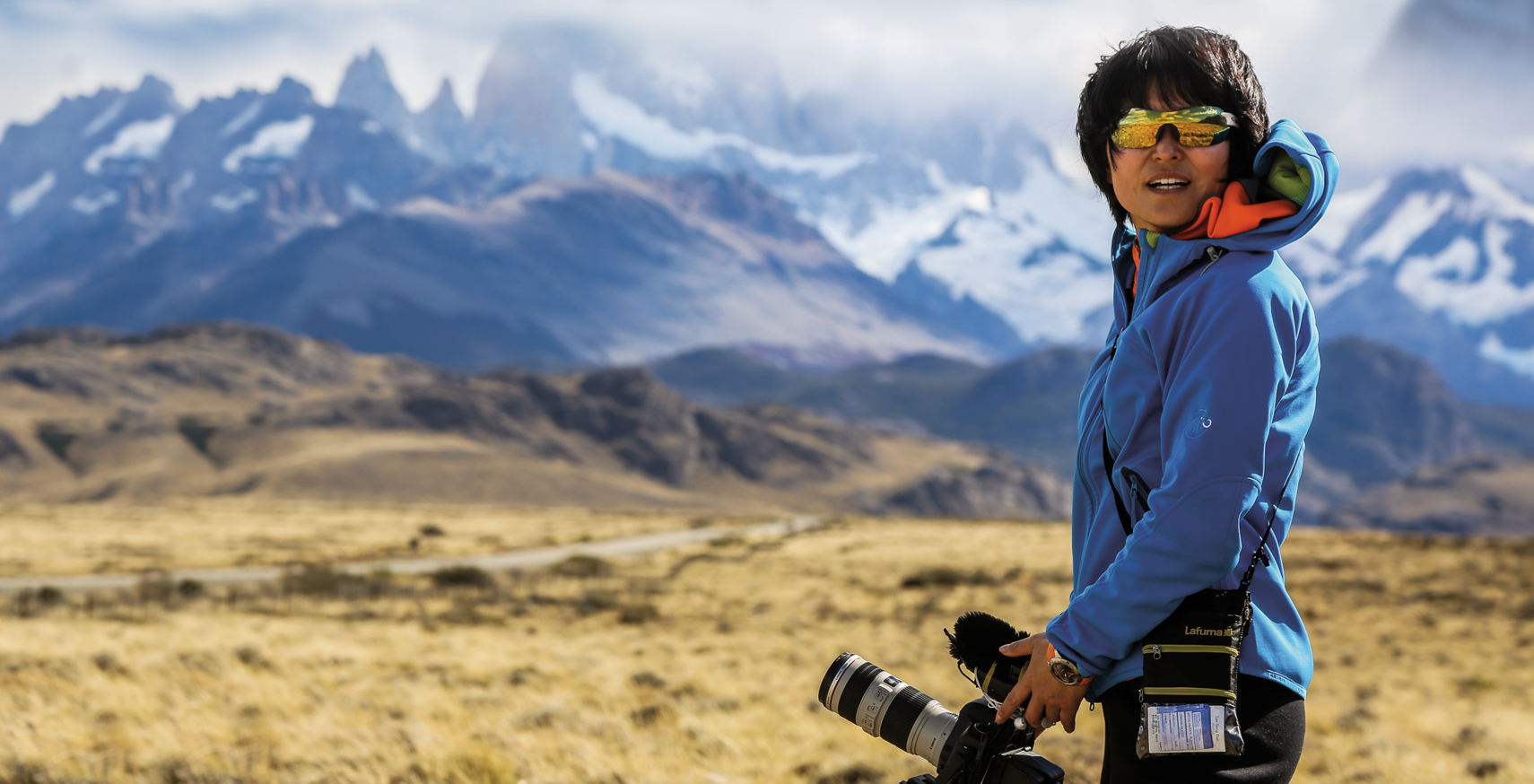
Lee Sang-eun is brimming with all kinds of love: love for Mother Nature, for her coworkers, even passersby conversationalists, toward life itself and last but perhaps most importantly, her life partner and muse. The spark that set aflame her impressive career as a mountaineer is her husband Kim Sung Sun, a mountaineer renowned for his adventures into the extreme wilderness who is now focusing on managing an array of related businesses. Though her muse may be her endearing husband, she is definitely a premier muse for the production staff of KOREA magazine.
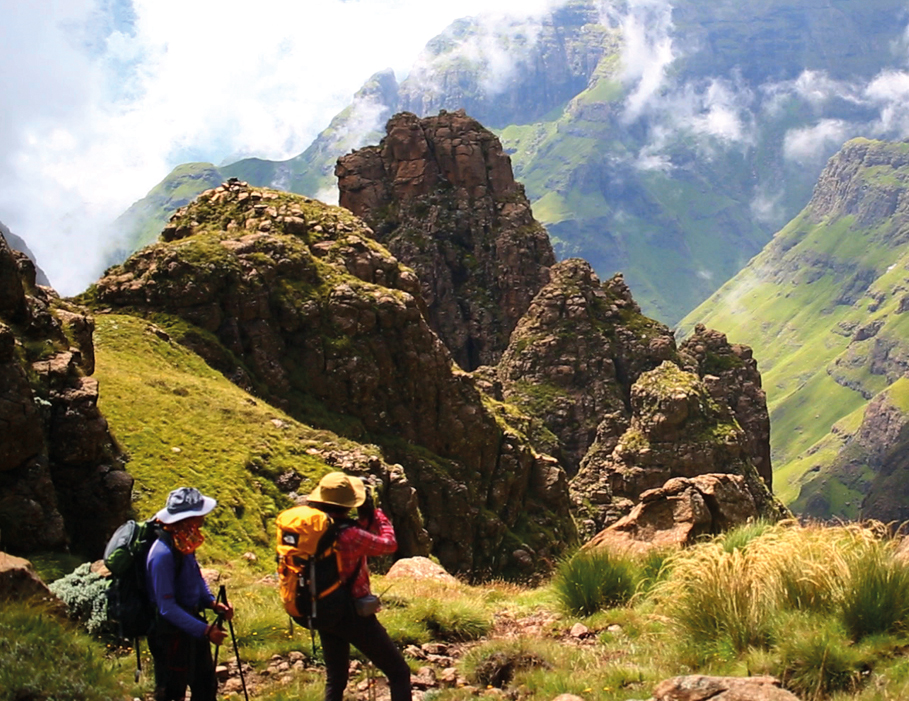 The infotainment ‘Screen Album – The Mountain’
The infotainment ‘Screen Album – The Mountain’
premiered on KBSWorld.
The weekly program captures
vistas of wondrous slopes and various
communities residing
on mountainsides.
© KBS, Mountaineering Chronicles
(‘Screen Album – The Mountain’)
 © shutterstock
© shutterstock
Regardless of where in the world she has been and what wondrous peaks she has climbed, Lee is quick to talk of how blessed Korea is. “Our four seasons, the coming and going of every sprout, leaf and life. The luscious breeze, then that wistful fading away of multicolored leaves… Witnessing it all, nature’s cycle feels precious every time,” she says. “Every occasion is different, extraordinary. How amazing is it that we’re granted access to the most varied seasonal changes on Earth!” Koreans are indeed, blessed by Mother Nature herself.
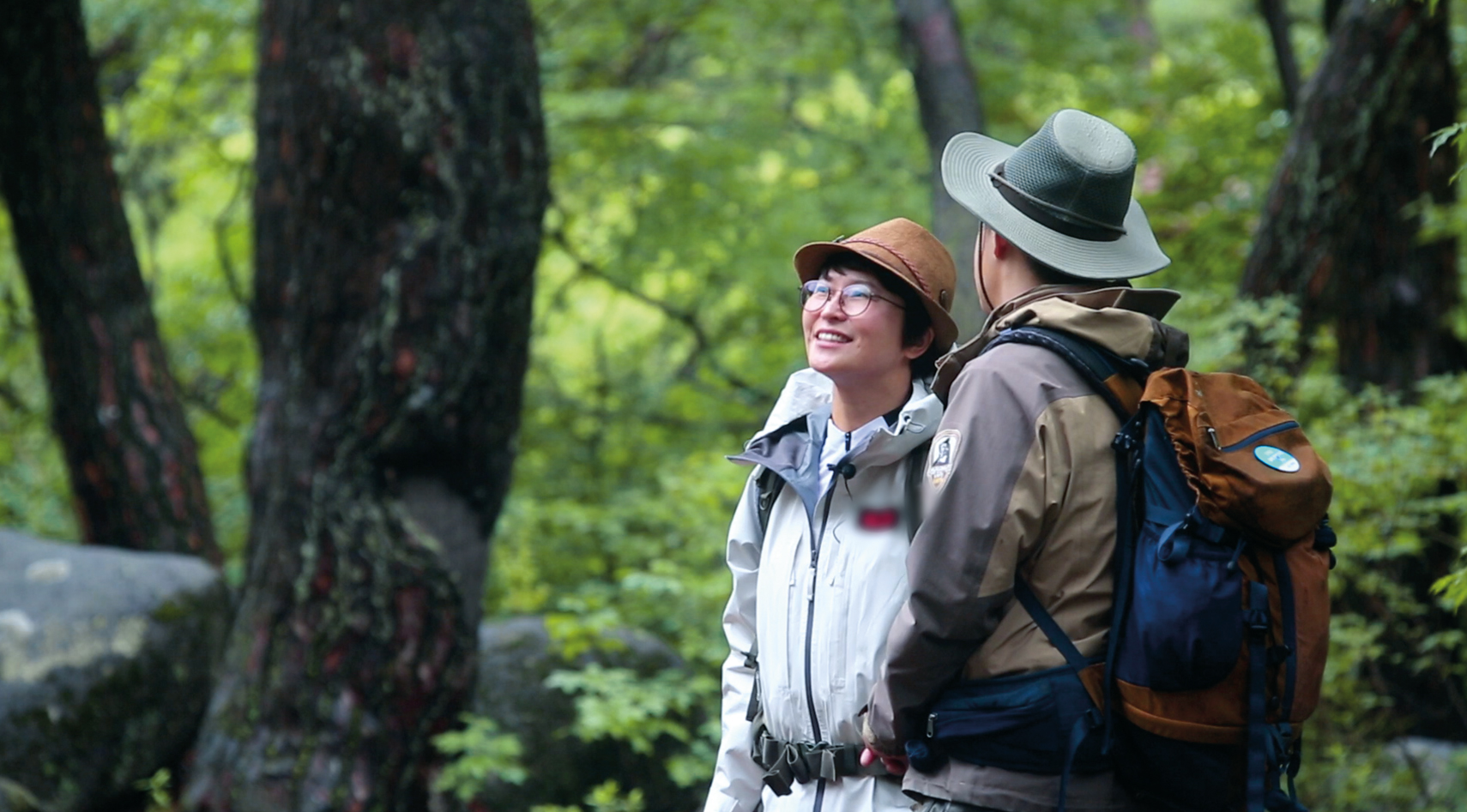 The infotainment ‘Screen Album – The Mountain’ premiered on KBSWorld. The weekly program captures vistas of wondrous slopes and various communities residing on mountainsides. © KBS, Mountaineering Chronicles (‘Screen Album – The Mountain’)
The infotainment ‘Screen Album – The Mountain’ premiered on KBSWorld. The weekly program captures vistas of wondrous slopes and various communities residing on mountainsides. © KBS, Mountaineering Chronicles (‘Screen Album – The Mountain’)
“I personally wouldn’t find spring so beautiful, had it not been for its preceding wintertime,” she adds. “On the other hand, the greenery of summertime may not be as welcomed had it not been for the cool breeze and barren land that prevailed in preceding months. Our changing seasons are natural reminders of how priceless every minutiae being, down to our own identities, inherently is.”
Teeming with enthusiasm on all fronts, Lee is an energizer whether for her listeners, fellow trackers or companions of any sort. When asked how she maintains such unbristled positivity, she offers a candid response: “I, too, have moments of doubt — just like we all do. Like yourself, I also struggle with the fact that I have expectations to live up to, and such pressures. But then again, who doesn’t? And because I can relate — as you can, too — we all are able to form a bond, a solidarity probably applicable across most if not all of humanity.”
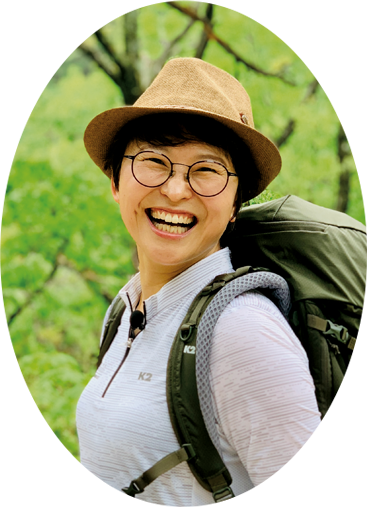
Conversation with
Lee Sang-eun
Seated amidst the cozy camping (or ‘glamping,’ as per the Korean trend ‘glamorous camping’) grounds of LOHAS alongside Daecheong-ho Lake, Lee speaks with glistening eyes as if to soak up every invaluable moment of our time together.
QPlease describe the hiking experience for us.
The process of hiking mountains is an encapsulation of life itself. Perhaps that’s precisely what draws me to the experience — to the point wherein every living cell, the entirety of my being, craves the particular activity of climbing mountains. It’s also the reason I tell novice, rookie or even prospective hikers — those deciding on whether or not it’s worth a try, or to take it up as a hobby — to make a habit of climbing even itty bitty hills, which you can find nearly anywhere in Korea.
QWhat about the process do you most enjoy?
Continuing my allusion to human life: because I feel that it’s a scaled-down version of life. It in turn amplifies everything, including the most trivial and fleeting of moments. I love how one moment, my muscle pains bother me persistently then the next moment, I couldn’t feel prouder of myself, for persevering and enduring that moment of struggle. Likewise, I feel a heightened sense of appreciation for a single bite into a juicy apple when snacking atop a crest. Till then, that apple in my bag was undoubtedly a literal, physical burden. It — the same apple — can also feel like a chore, or a mundane factor in life, when we’re simply sitting at home to have a bite. Imagine approaching all these moments in such dramatized form — in such extreme magnitude! Such a joyous way to savor life and its juiciest bits.
Imagine approaching all these moments in such dramatized form — in such extreme magnitude! Such a joyous way to savor life and its juiciest bits.
QHow has nature affected you?
When I describe this, I hope that none of our readers imagine this to pertain only to myself. On the contrary, this is a universal effect nature has on humanity. Its vastness, grandiosity, the simply wondrous and spectacular being is in itself a consolation, a metaphysical source of energy. One way I tap into this power of nature is by waking up at the break of dawn to catch the sunrise.
(She points and refers to the sight that unfolds from where we’re situated.) When the sun rises over the aquatic horizon here, then starts to glisten against the pure, tranquil surface of the lake… imagine the innumerable emotions. Every time I take in the horizon at the precise moment of sunrise, it takes on yet another appearance, imparting a mood yet unexperienced. Seeing its varied, though consistently honest versions — on days cloudy, foggy, misty, sunny or any combination thereof — my problems seem to shrink, my daily woes fade away and are replaced by sheer gratitude for my existence, plus overwhelming relief. What a powerful effect nature has on us! I will never cease to cherish it.
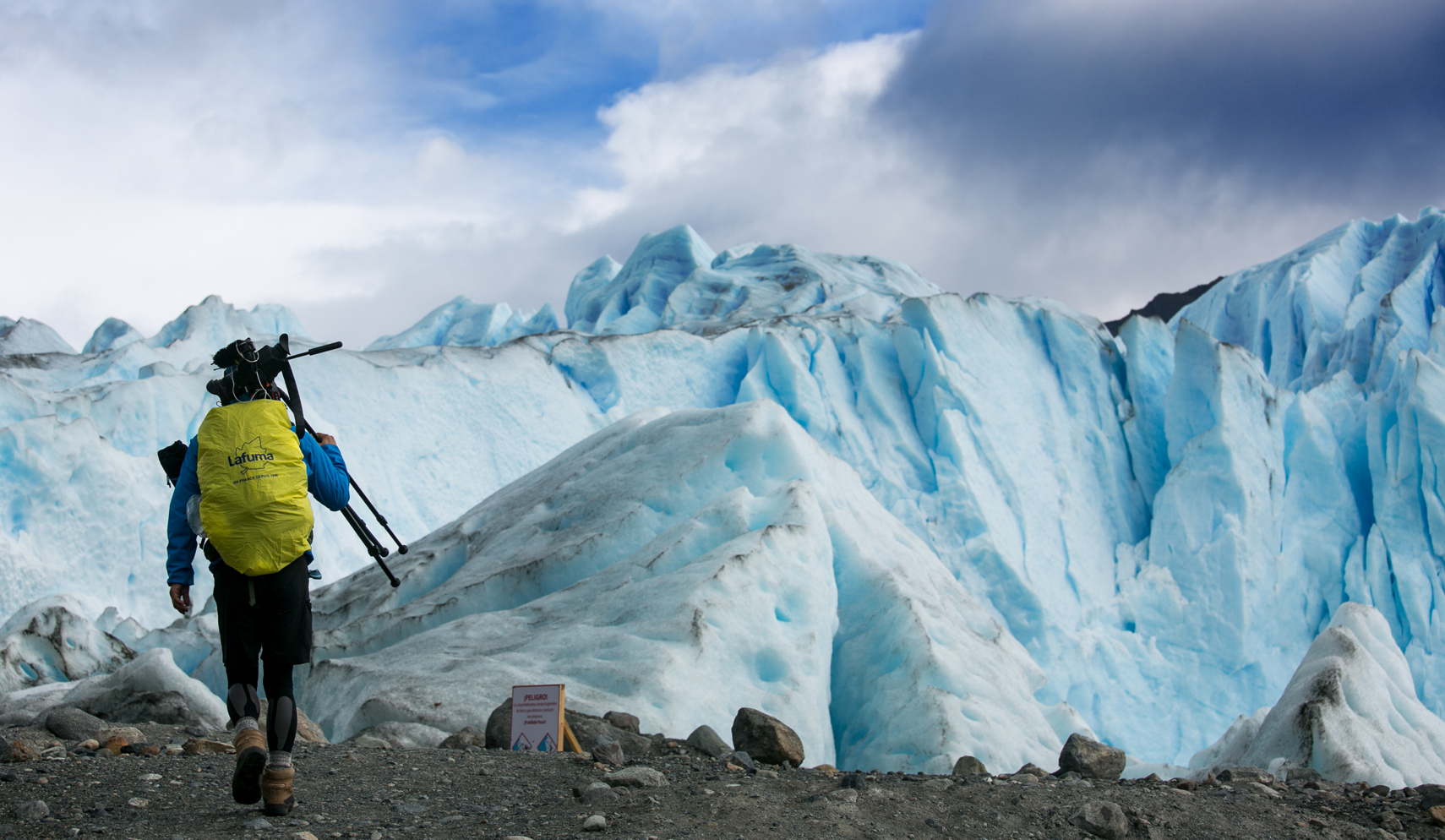
In Korea, where mountains flank most highways, hills and valleys are in abundance. As we now enter springtime, let’s indulge in a classic Korean landmark: Dulle-gil Trail in Jirisan Mountain. While the mountain itself spans both the southern and northern parts of Jeolla-do Province, tucked alongside are plenty of plant life, best enjoyed with a ‘forest interpreter,’ as the occupation is officially called.
![]()
Written by
Lee Yongkook,
managing editor
Photographed by
Studio Kenn
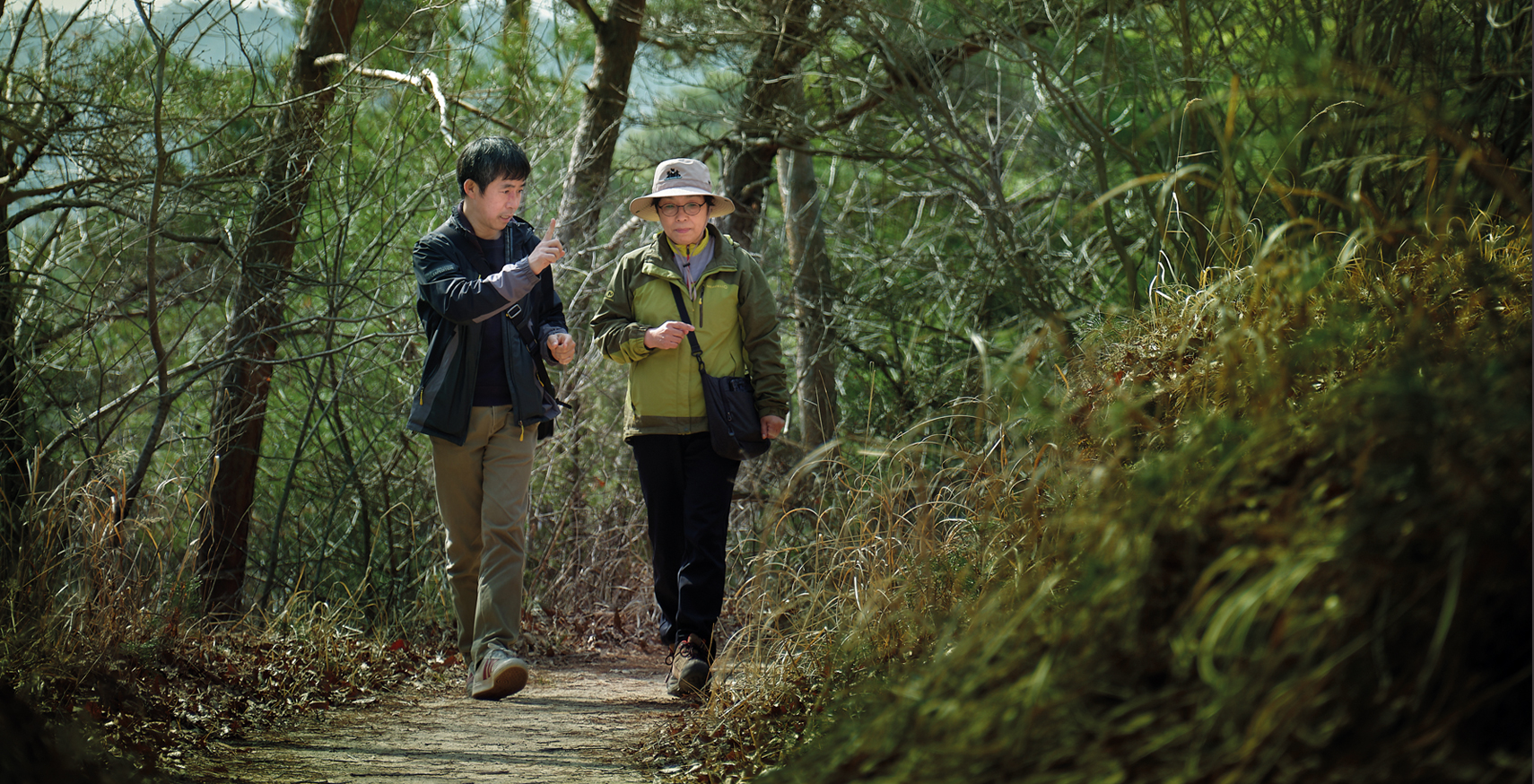
Originally from Jeju-do Island, Lee Changsu was living in Seoul when he dared to decide to move to Namwon, Jeollabuk-do Province. For anyone who has listened to or been guided by his tree-interpretations, it’s hard to imagine him living elsewhere (anywhere away from forestry). And yet, it’s also hard to imagine leaving behind city life in the capital with your entire family in your forties.
That’s precisely what Lee did ten years ago. Ever since, he hasn’t looked back. Instead, he dove into his studies of trees in 2011 and in 2015, started giving lessons on trees. Four years is a brief time period for anyone to develop any specialty or expertise, made possible only thanks to his absolute zeal for trees.
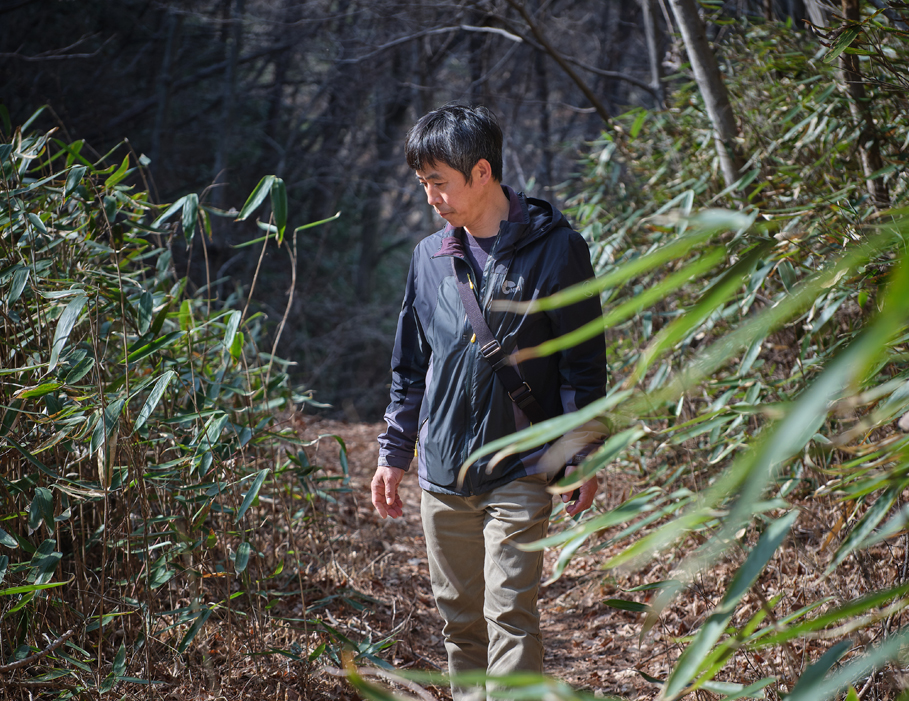
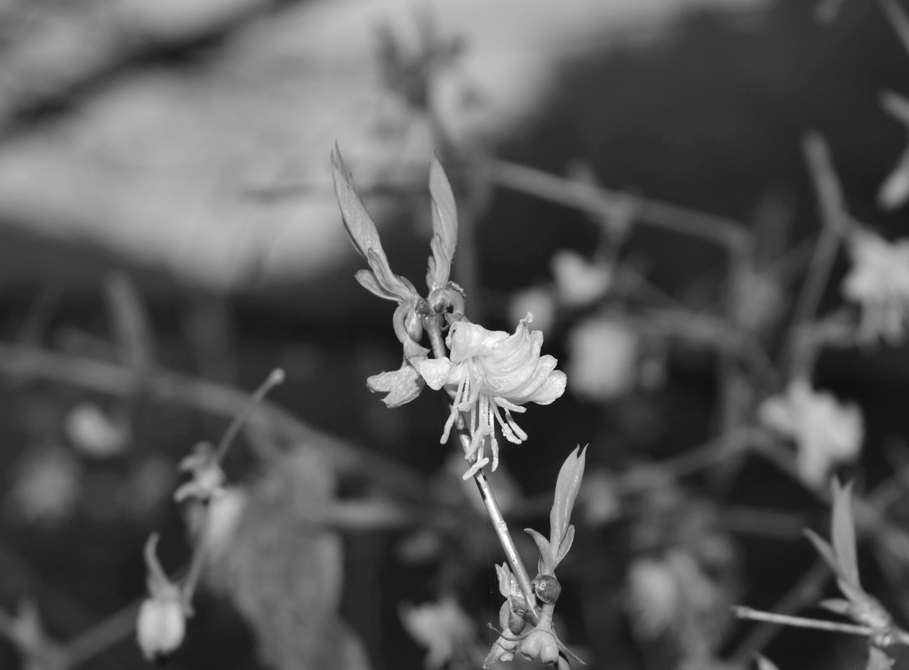
Talking about trees not only makes Lee’s eyes glisten in earnest; it draws from him such extreme affection as to make him empathize and refer to them in personification.
True to his characteristic, unwavering passion for trees as to accord them a special place in his heart, Lee never deems trees routine or mundane in any way. Given Korea’s distinct, vivid four seasons, Lee is quick to gush over the smallest of developments glimpsed on plant life as they undergo due seasonal changes. In fact, visible evolutions and stages of foliage growth never cease to exhilarate Lee from the depths of his heart. “Every single moment of encountering, observing or simply talking about — as part of my job — trees gives me pure joy,” he proclaims, visibly enchanted by energy accorded by Mother Nature herself.
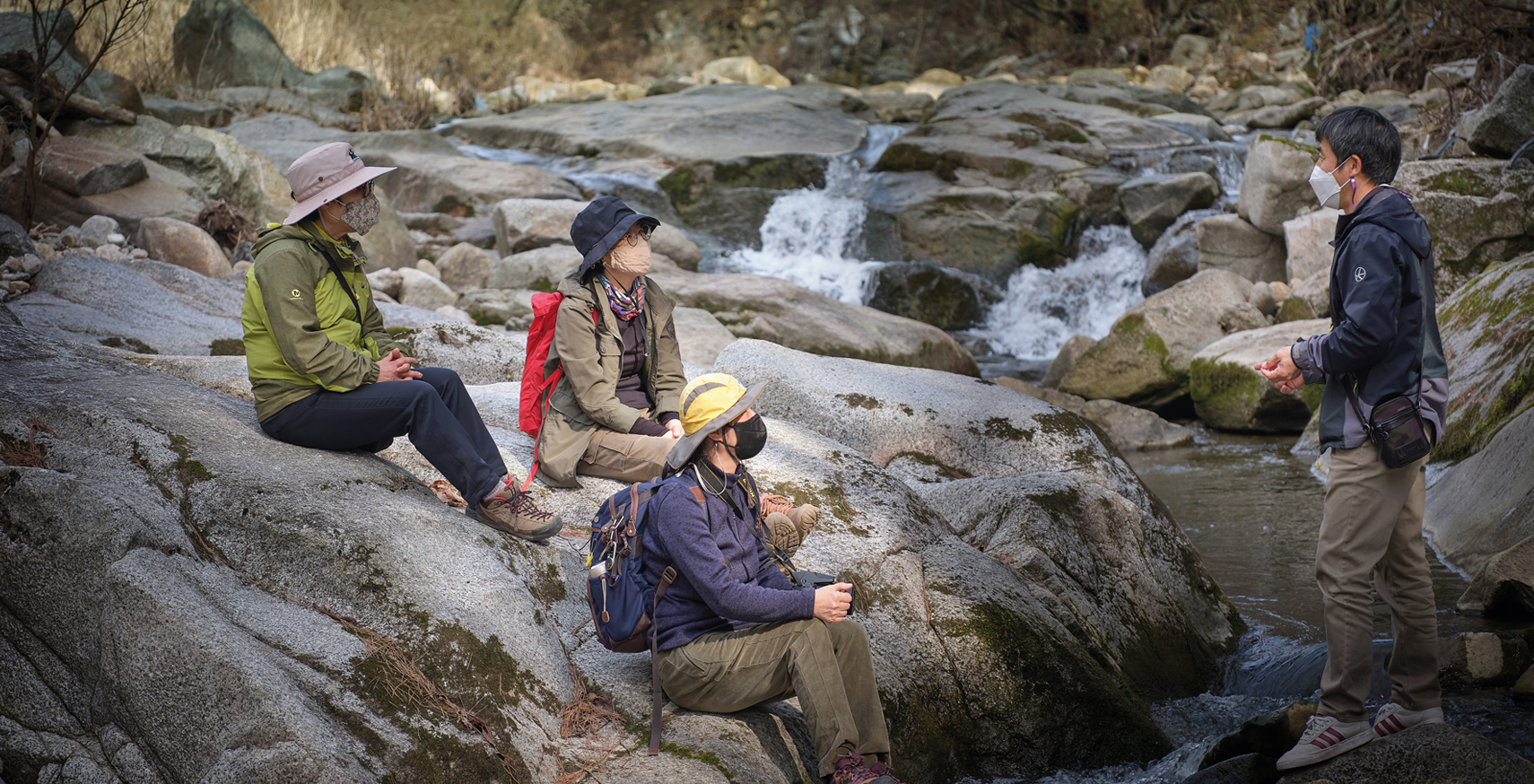 Amid the streams of Guryong Waterfall, Lee explains the wondrous workings of the surrounding ecosystem.
Amid the streams of Guryong Waterfall, Lee explains the wondrous workings of the surrounding ecosystem.
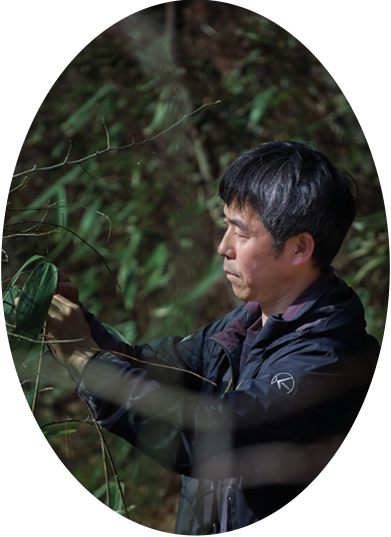
Conversation with
Lee Changsu
Lee Changsu has lived in Jeju-do Island (the mainstay of Korean tourism), Seoul (the national capital for which no words are needed) and in Namwon, Jeollabuk-do Province. His exuberant face and bubbly body language are living proof of his compatibility with his current environment near Jirisan Mountain.
QWhat drew you to your current occupation?
For every year succeeding 2011, Aug. 29th is the most special, self-celebratory anniversary for me. I call it my “tree-day” and treat it as if it’s a birthday, announcing to everyone around me — none of whom even care! It doesn’t matter, because it has so, so much significance to me.
On that day in 2011, I was mesmerized by a tree of the willowy kind, laden with red-tinted bark. Ever since, trees took my heart and I dove into their charms without looking anywhere else.
Being surrounded by trees on all sides makes me joyous in the most genuine sense of the expression. Seeing the smallest changes affect these flora awes me, at whichever season, moment or growth stage I catch them in. Then I’m affected by the most minor developments they regularly undergo because of the huge amounts of attention I pay them instinctively. I can’t help being so attracted to these blessings of nature!
QWhat made you move to this part of the country?
As fate had it, my wife and I visited these slopes of Jirisan on our very first trip together. That said, I was fed up with the urban dayto-days of living in Seoul. The unbearably routine, literally “boxedin” — as apartments are densely compartmentalized into countless residencies — lifestyle of urban living was dreary, to say the least.
There were two decisive moments that awoke me to that realization. One is when my wife asked me what I plan to do after retirement. I was taken aback when I realized I had never imagined myself doing anything outside of my monotonous day job. The best I could come up with was… a security guard, perhaps? That was a shocking revelation, how much I simply lacked vivacity, energy and any urge whatsoever to will myself into action.
Another case-in-point are the terrible prospects I imagined for my son. He was around ten years old at the time when I realized he’d been and may very well continue growing up amid concrete surfaces instead of soil. Imagining that made me recoil.
QWhat’s your favorite and least favorite type of tree?
Oh, you know I’m going to say I have too many favorites, that all of these within our sight are absolutely wonderful. In fact, let me narrow it down to “trees that belong to the land on which they stand.” I find particular beauty in indigenous trees that are well-rooted where they always have been, and should be as they are naturally acclimatized to the locations. Can I just put it out there that I am most enamored by the most Korean, the most genuinely “our trees” stemming [not only physically, but through its predecessors]from our lands?
On the other hand, there are trees that I sort of pity and even plants that I give permission for my tour guests to snap and take home. The first type are those that have rooted themselves on foreign land to which they are inherently alien. And the latter are cases like these springy bursts — see here — of little pine trees? Contrary to how ideal this sunlit gravesite is and how they’ve nested well on such a warm spot, they are simply fated to be crushed soon — of course, by workers who have been paid to upkeep the spot. I dub them “neglected beings.” It’s not only pets or children that are neglected; it happens to plants like these, too.
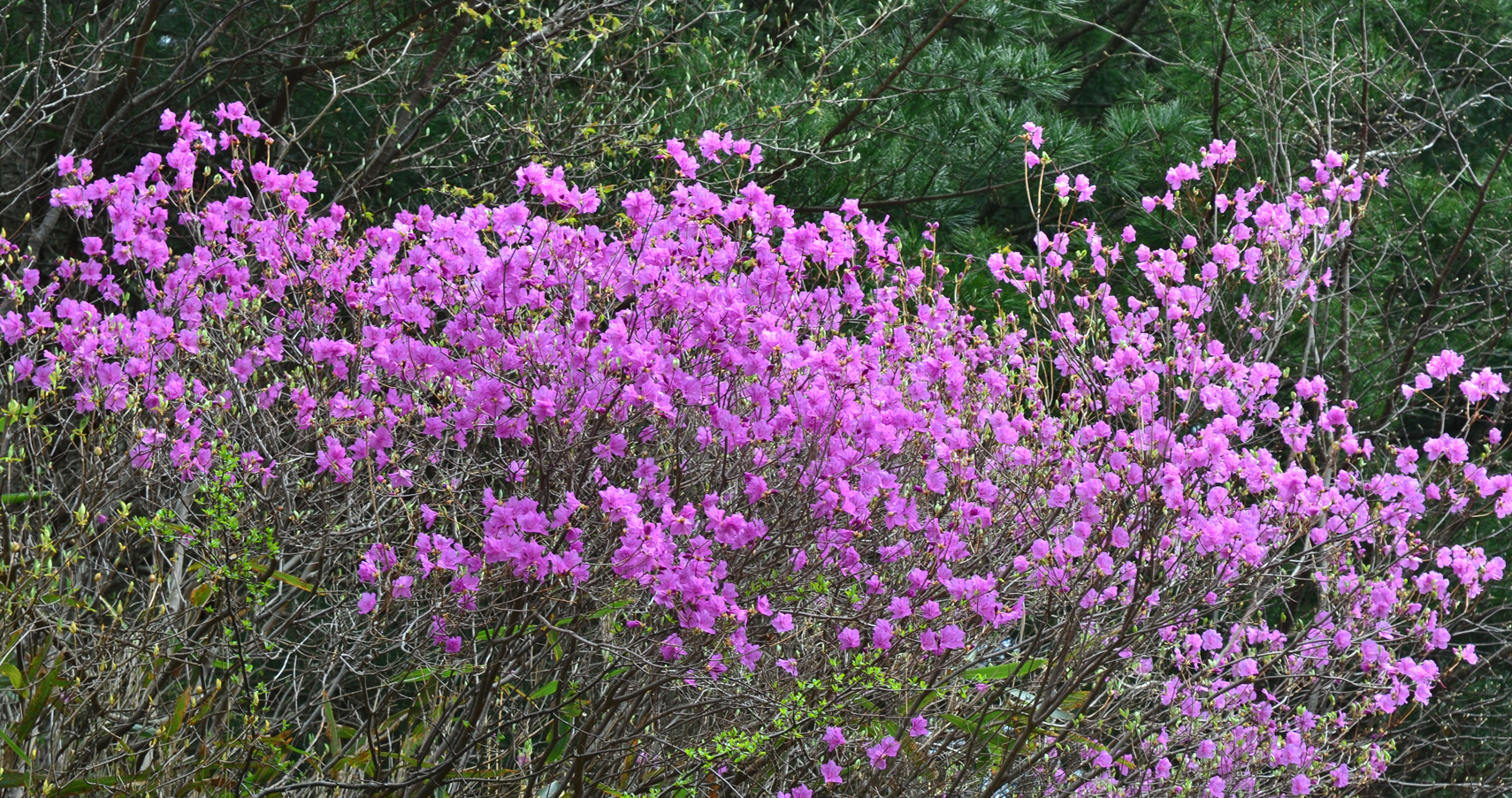 © Lee Changsu
© Lee Changsu